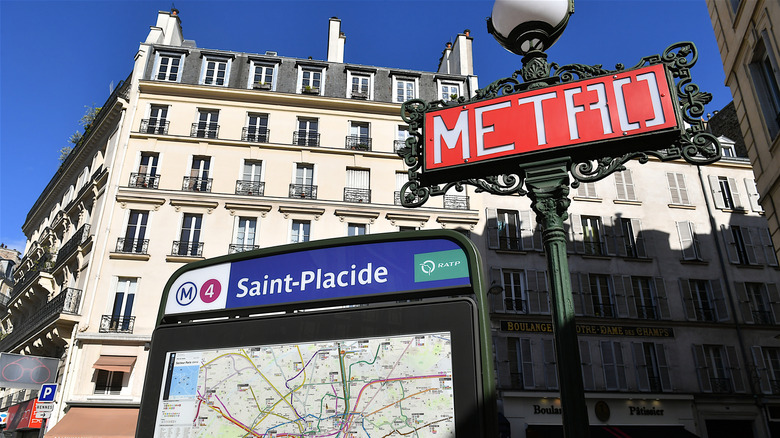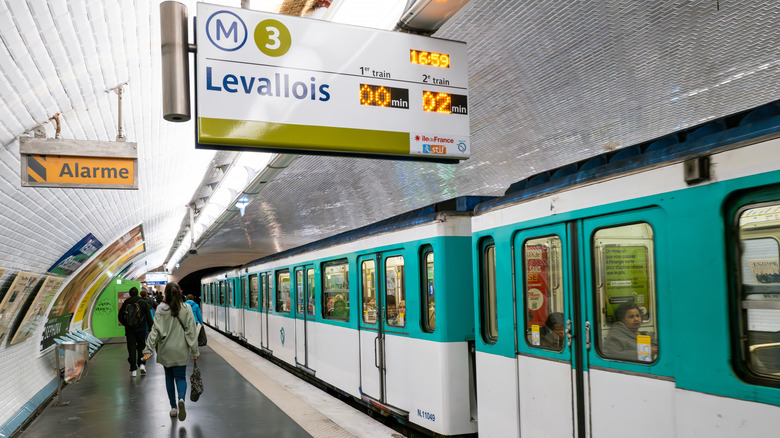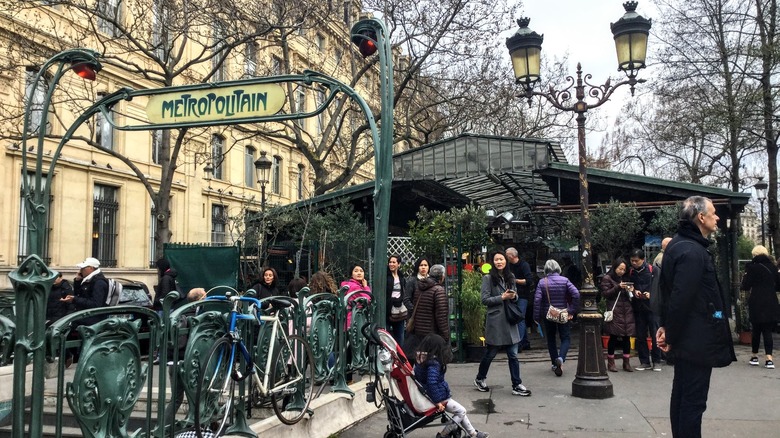One Of Europe's Best Public Transit Systems Offers An Affordable Way To Explore Paris
The Paris Metro, the city's subway system, might not be as steeped into the city's symbolism as, say, London's –– whose "Mind the Gap" phrase is becoming more of a slogan on souvenirs than a safety warning. However, a trip to Paris is made much easier when taking advantage of this sprawling mode of underground transportation. The Paris Metro is affordable and efficient. On the map, it may look like a bunch of crisscrossing lines, but it is fairly easy to navigate. There is even a Paris Metro app to help you.
Although prices are always subject to change, single rides are just over two euros as of 2024. Depending on how long you're in Paris, you can either buy individual single rides or opt to buy a Navigo Easy Pass card (which provides unlimited rides for either a week or a month for a flat rate) at Metro stations all over the city. Just be aware that daily passes split your travel options by zones, varying in cost based on how many zones you plan to visit. Most points of interest in Paris are located in Zones 1 through 3 and an unlimited pass for just these three zones costs a little over 11 euros for the day. Versailles and major Paris airports are in Zones 4 and 5. Navigo cards are also reloadable using an in-person kiosk or with your smartphone. If that sounds confusing, don't fret: Just remember that the higher the number, the further out you can get from the city center.
The Metro line's final stops indicate which direction you're going
With 16 lines, the Metro covers Paris's historic birthplace on the Île de la Cité and all its popular districts like Montmartre and Saint-Germain-des-Prés. It even reaches the city's outskirts (even beyond Versailles). Each Metro line goes in two directions along its route. To figure out where to stand for boarding the train traveling in the direction you want, pick the side with the sign that displays your chosen line's endpoints –– not the individual stop you want to go to. Additionally, many of the lines link up with others, meaning you do not have to buy two different tickets if you switch from one line to another –– as long as you don't exit the underground system. On the maps located at each station, look for Metro stops marked with dots that cover multiple lines to see which stops have available transfers to other lines.
The unruly line etiquette in Paris can make getting on and off the Metro seem a little chaotic. Parisians are still polite, but they tend to be rather direct when going about day-to-day activities like using transportation compared to Americans. After the Metro comes roaring through the tunnel, you should still allow passengers off the train before boarding, but be decisive and aware of pickpocketers. This will help you blend in with the locals.
The Paris Metro is among the oldest in the world
While the Paris Metro is useful for anyone spending time in the City of Light, it is still at the mercy of its human operators. Parisians are known to voice their feelings through strikes and protests. While these are rarely dangerous, sometimes they are focused on the concerns of transportation workers. It's good to have a backup plan if a protest breaks out and to keep an eye on news reports in case you need to look into other modes of transportation.
Aside from taking you to the city's major attractions (and plenty of stops in between), a trip on the Paris Metro allows you to experience some historic infrastructure. The Paris Metro began operating in 1900, making it among the oldest subway systems in the world. While the Metro entrance signs above ground add uniquely Parisian details to the already beautiful streets, they also reflect the Metro's history. Throughout the city, some Metro entrances are marked by red signs on lampposts, while others still have the old wrought-iron railings and Art Nouveau lettering from earlier decades. Somehow Paris manages to make even public transportation signs look chic.


